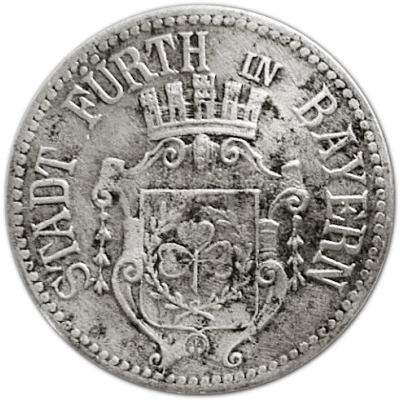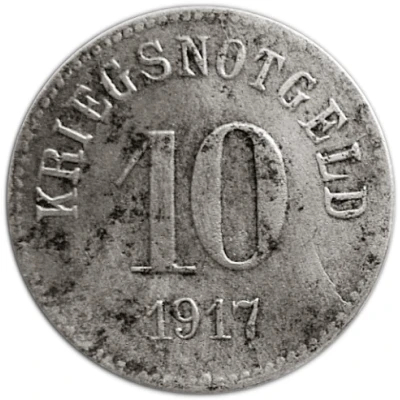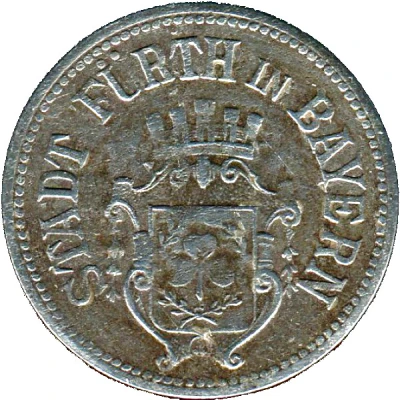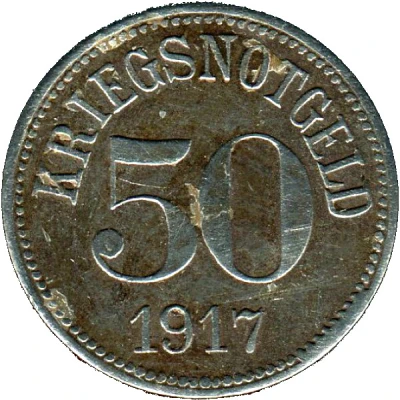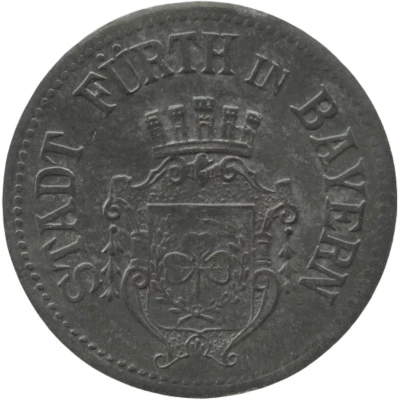
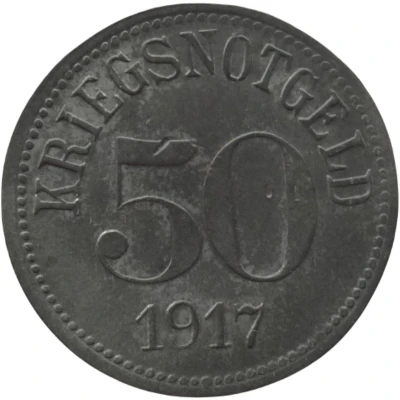

© Willem63 (CC BY-NC-SA)
50 Pfennigs - Fürth in Bayern
1917 year| Zinc | 2.30 g | 22.5 mm |
| Issuer | City of Fürth (Federal state of Bavaria) |
|---|---|
| Emperor | William II (Wilhelm II) (1888-1918) |
| Type | Standard circulation coin |
| Year | 1917 |
| Value | 50 Pfennigs (50 Pfennige) (0.50) |
| Currency | Mark (1914-1924) |
| Composition | Zinc |
| Weight | 2.30 g |
| Diameter | 22.5 mm |
| Thickness | 0.93 mm |
| Shape | Round |
| Technique | Milled |
| Orientation | Medal alignment ↑↑ |
| Demonetized | Yes |
| Updated | 2024-10-04 |
| Numista | N#64948 |
|---|---|
| Rarity index | 77% |
Reverse
Beaded rim, legend above denomination centered with date below
Script: Latin
Lettering:
KRIEGSNOTGELD
50
1917
Edge
Plain
Comment
Issuing authority: [Stadt, Bayern]Interesting fact
One interesting fact about the 50 Pfennigs - Fürth in Bayern 1917 coin is that it was issued during a time of economic turmoil in Germany, known as the "Inflationary Period" (1914-1923), when the value of the German mark was rapidly decreasing due to excessive printing of money to finance World War I and other economic factors. As a result, many different types of coins were issued during this time, including the 50 Pfennigs coin made of zinc, which was a cheaper alternative to traditional metals like silver or gold. Despite its low value, the coin remains a popular collector's item today, providing a unique glimpse into Germany's economic history.
Price
| Date | Mintage | VG | F | VF | XF | AU | UNC |
|---|---|---|---|---|---|---|---|
| 1917 | 100000 | - | - | - | - | - | - |
Values in the table are based on evaluations by sales realized on Internet platforms. They serve as an indication only for 50 Pfennigs - Fürth in Bayern 1917 coin.
